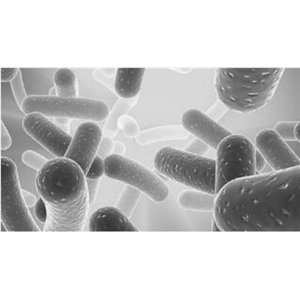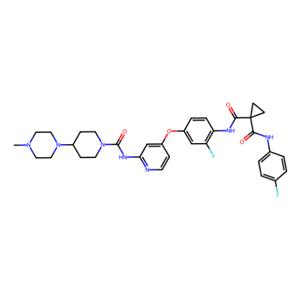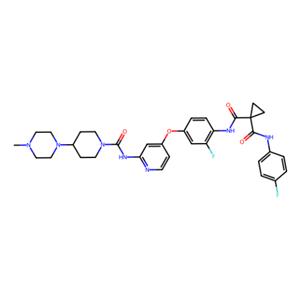网站主页
化工产品目录
生物化工
抑制剂
蛋白酪氨酸激酶
N-[2-氟-4-[[2-[[[4-(4-甲基哌嗪-1-基)哌啶-1-基]羰基]氨基]吡啶-4-基]氧基]苯基]-N'-(4-氟苯基)环丙烷-1,1-二甲酰胺
戈伐替尼
戈伐替尼|T6517|TargetMol
Golvatinib
928037-13-2
928037-13-2
¥248
1mg
起订
¥355
2mg
起订
¥578
5mg
起订
上海 更新日期:2025-11-17
产品详情:
- 中文名称:
- 戈伐替尼
- 英文名称:
- Golvatinib
- CAS号:
- 928037-13-2
- 品牌:
- TargetMol
- 产地:
- 美国
- 保存条件:
- Powder: -20°C for 3 years | In solvent: -80°C for 1 year | Shipping with blue ice/Shipping at ambient temperature.
- 产品类别:
- 抑制剂
- 货号:
- T6517
公司简介
TargetMol Chemicals Inc. 总部位于马萨诸塞州波士顿,致力于为全球生化领域科学家的研究提供专业的产品和服务。TargetMol?品牌的客户群分布于40多个国家和地区,已发展成为全球知名的化合物库和小分子化合物研究供应商。 TargetMol?可提供160多种满足不同需求的化合物库,以及多种类型的生化试剂产品,包括12000多种抑制剂、16000多种天然产物和各类多肽、抗体、生命科学试剂盒等,此外,我们还建设有CADD(计算机辅助药物设计)研究中心、药理实验室、药化合成平台三大技术中心,全方位满足客户的定制需求。 凭借我们优质的产品和服务、快速高效的全球供应链和专业的技术支持,我们将有效帮助您缩短研发周期,取得更成功的结果。
| 成立日期 | (13年) |
| 注册资本 | 566.265100万人民币 |
| 员工人数 | 100-500人 |
| 年营业额 | ¥ 1亿以上 |
| 经营模式 | 贸易,工厂,试剂,定制,服务 |
| 主营行业 | 天然产物,生化试剂,分子生物学,分子砌块,生物技术服务 |
戈伐替尼相关厂家报价
-

- c-Met和VEGFR2双重抑制剂(E-7050)
- 上海泽叶生物科技有限公司 VIP
- 2025-12-31
- 询价
-

- E7050
- 上海杰瑞兴生物医药科技有限公司 VIP
- 2025-12-31
- 询价
-

- aladdin 阿拉丁 E126304 Golvatinib (E7050),抑制剂 928037-13-2 98%
- 上海阿拉丁生化科技股份有限公司 VIP
- 2025-11-14
- ¥926.90
-

- aladdin 阿拉丁 G408315 Golvatinib (E7050) 928037-13-2 10mM in DMSO
- 上海阿拉丁生化科技股份有限公司 VIP
- 2025-05-16
- ¥896.90
-

- E-7050 (Golvatinib)
- 南京百鑫德诺生物科技有限公司
- 2024-09-26
- 询价

